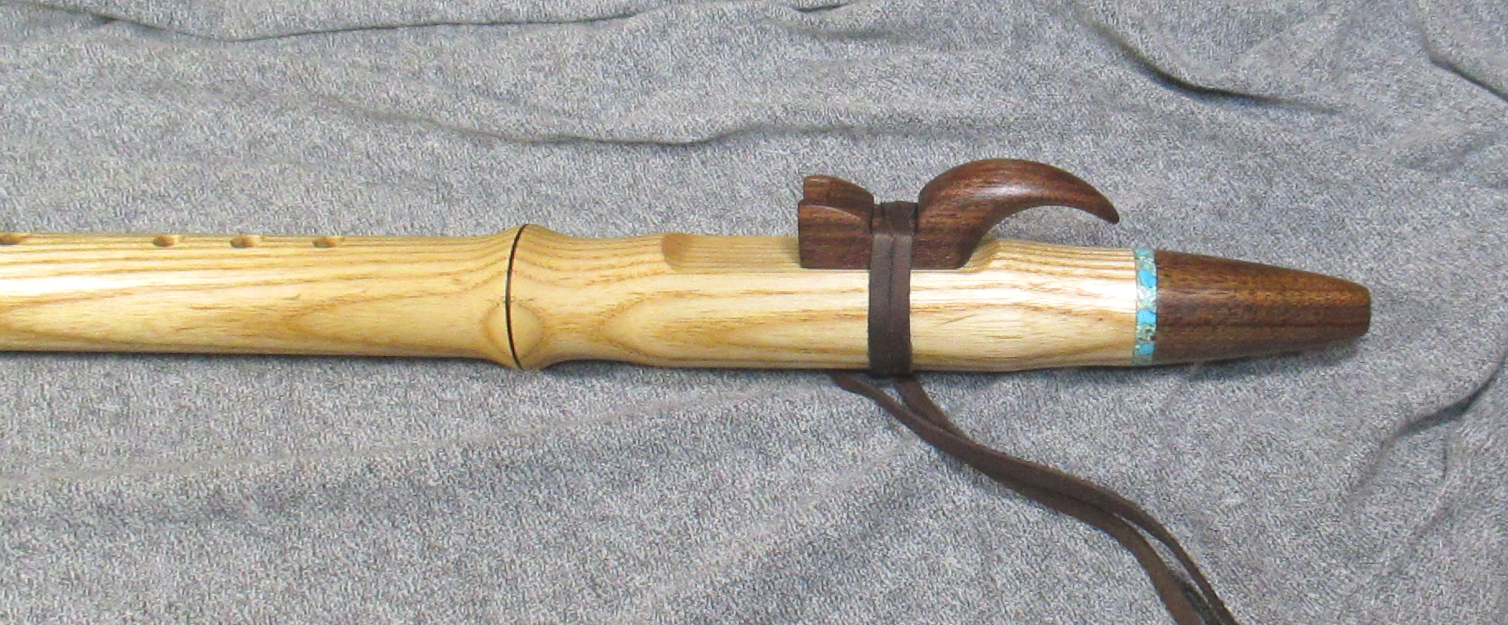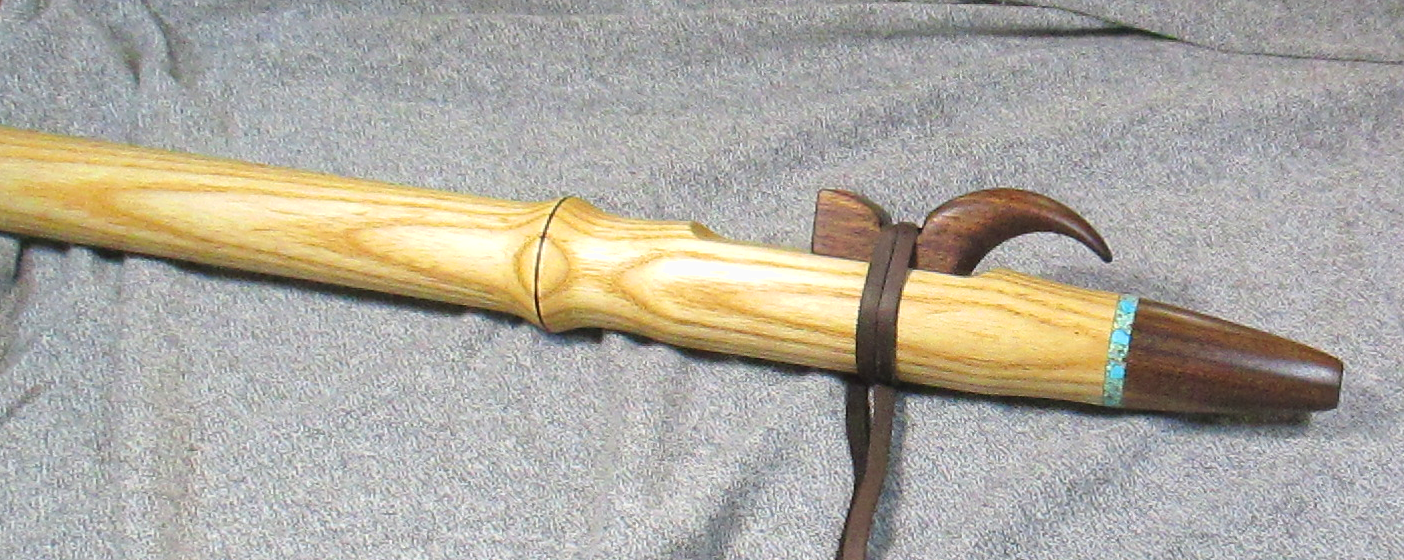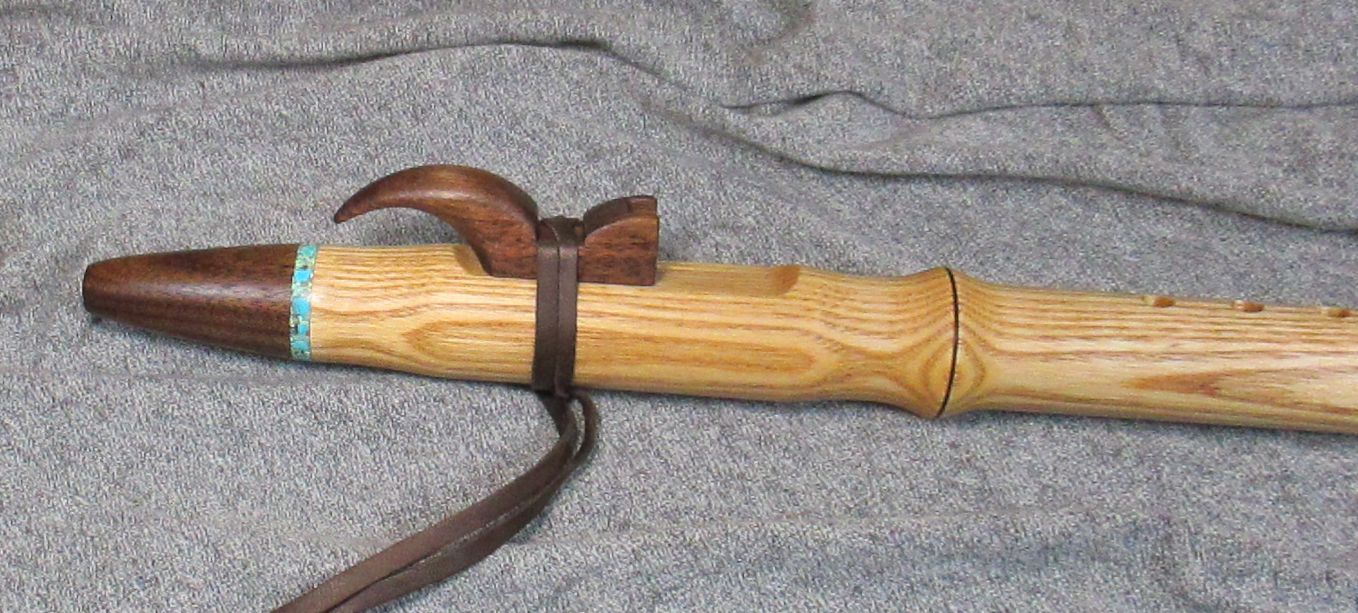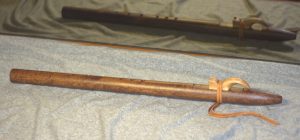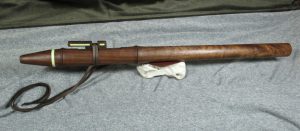Native American-style flute in F#
(F# octave 4 fundamental with F#5 higher “octave note” available).
Wonderful-sounding flute with a beautiful look (instead of one or the other).
Pentatonic Minor “standard” scale commonly expected, plus plenty of spot-on, intuitive cross-fingerings to play anything. I only have to half-finger one note to play Behind Blue Eyes by The Who.
Warbler !
This flute warbles ! You can hear it warble slow then fast starting at 10 seconds into the sample clip here. This flute was made alongside the flute in this sound clip and sounds exactly like it: F# Flute Sound Clip
Real Turquoise Bits:
The naturally colorful accent ring is crushed but 100% genuine turquoise rock which I stabilize in the ring with minimal, clear acrylic. Yes there is fake turquoise – esp. most of the most colorful, but I know the Sleeping Beauty turquoise source and this is all real. It made it far more difficult! Soft, genuine turquoise is a bit dull (as you can see in the in-between areas, click-to-enlarge the closer-up pics, like the last gallery image). So I set more brightly-colored, split-pea-sized chunks in frequent intervals between the duller rough material (all from the same rocks). The larger, colorful pieces were so hard I had to use a diamond file to hand-turn them flat! The resulting “terrazzo” (stabilized with minimal, clear acrylic, looks a bit like little, turquoise “flowers”. Tina now wants one for her birthday.
Finish:
This one is sealed and protected but not shiny. It is not unfinished wood that’s only oiled with simple flute wax (you can order it that way); this is more maintenance-free than that. It has had 2 outer and 3 inner sealing coats that sunk in — thin “drying oils” that were given time to harden in the wood (not on the wood) then topped with Odie’s Oil which makes a great flute wax (you can wax the flute, too, but don’t have to). This gives the wood a very natural “non-furniture” look but is not as dry, raw, or unprotected as flute oils/waxes that require constant re-application.
You Will Not Be Disappointed
Shipping:
We split the shipping cost — April 2022 or so USPS just raised prices on this length. Your minimal, $9.95 flat rate shipping fee is about half what it costs us, total, to buy and get the heavy-duty fiber-board shipping tube to you (which actually makes a viable storage/travel container, even kept and decorated by some resourceful customers).
I will not be able to continue selling flutes of this quality for this price — this is to get our name more out there.
Enjoy and God Be With You — Jeff & Tina Burris (Otter Lake Flutes)
Tuning
This flute is tuned to the industry standard of A=440 at 72. All flutes change in pitch with temperature and no Native American style flutes (except a few rare, expensive, custom prototypes) can be re-tuned, so NAF’s are played solo or the others tune to it. This particular flute was not warmed up before tuning which means as it warms up it is actually more like A=440 at 76-78F instead of 72. While you’ll never hear this insignificant difference, it does mean it’s technically more in tune at the more common indoor temps in a lot of places. You’ll not even see minutia like this mentioned regarding flutes that don’t even pay any attention to this and are much further out in this manner. I take tuning seriously. Ultimately a good NAF is most in tune when the player is used to playing and using breath control. You can play my flutes much harder than some (no “blowing an eyelash off a baby’s cheek” required). Very controlled overblow.

